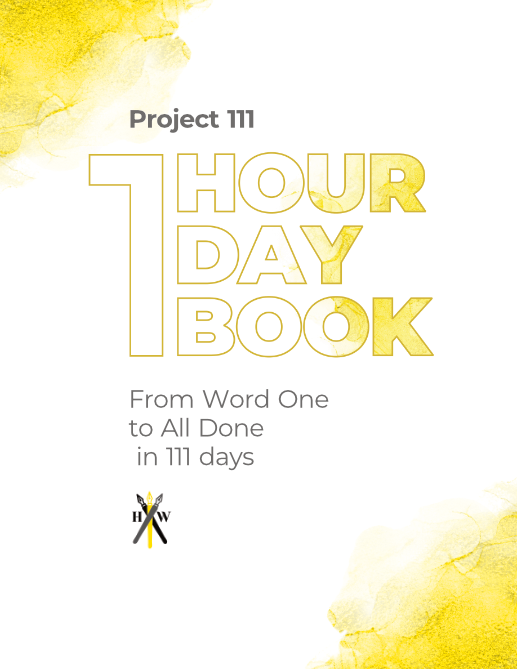What Are the Three Best Ways to Generate Ideas for a Writing Project?
Whether you’re thinking of writing your first book or can’t figure out your eighth novel, generating ideas for writing projects can be hard, but it’s something that everyone has to deal with.
Lucky for you, we have the secrets! We know the three best ways to improve your creative process and get those fresh ideas on the page.
1. Be Present and Observe

A great writer (contrary to popular belief) should not always be in his or her own head, dreaming up worlds and magic systems unlike anything this mundane earth has ever seen. No, a writer knows that all writing essentially boils down to further explaining the human condition.
In order to do that, a writer must first observe what it means to be human. Many book ideas can come from paying close attention to the world around us.
Look at where you work, shop, or spend free time. Notice the way people interact. Think of how you would describe these people. Once you feel like you have a solid observation, then you can get into the more dreamlike thinking. Ask yourself, “What if this was in space?” or “What if goblins all of a sudden ran through the grocery aisles?”
Part of observation and presence is being prepared to write down the ideas when they decide to fall like manna from heaven.
For this reason, many writers carry around a small notebook and pencil for when inspiration strikes. Certainly the notes app on your phone can do the trick, but it’s easy to lose. Having a notebook fully dedicated to ideas keeps them all together and waiting for you like a bundle of puppies waiting for a treat.
Idea generation can come from anywhere as long as you’re present in your daily life and paying attention to the things happening around you. One of the most celebrated authors, Ernest Hemingway, wrote:
Now is no time to think of what you do not have. Think of what you can do with that there is.
The world is overflowing with content for your new writing project; you just have to look for it (or simply look at it).

Our 84-page book planner and 111 day writing course.
2. Do Your Research

Research can be seen as boring or ineffective, but nothing could be further from the truth. We’re talking about researching for ideas and that’s probably the funnest type!
Let’s say you want to write a novel, but you feel like you’ve run out of ideas. You’ve been paying attention to the world around you, but you just can’t seem to find that golden nugget. What do you do?
Researching for a writing project can look like any number of things, but one of the most helpful things you can do is to read, because after all, you can’t write if you don’t read.
Pick up your favorite book and dissect it with a writer’s eye. In any book there are so many ideas that haven’t been thoroughly analyzed or overwritten. What do you like about the book? What do you wish the author would have expanded on?
Good ideas lead to good writing which leads back to good ideas which then leads back to good writing. Don’t be afraid to take some ideas from well enjoyed books. I mean, if there wasn’t a Pride and Prejudice we would never have a Pride and Prejudice and Zombies.
Before he wrote Mistborn, Brandon Sanderson did research of his own. On his blog, he wrote:
I had been looking at the Lord of the Rings books… and I felt that because of their popularity and success, a lot of people were going to be using this paradigm even more… So I thought to myself, “What if the dark lord won?”
Read books, watch movies, play video games. Do those things you already love doing but look for related ideas. Find your book idea by asking questions and digging deeper into ideas that seem to have been left alone.
Another type of research that helps with the ideation process is reading into history. Human history is treasure trove of stories. And they can be just that, stories. You don’t need to read in-depth analyses in academic writing.
Think of the number of books based of the fall of Rome or Greek mythology. That’s only a miniscule portion of what humanity has experienced.
You could write a novel based on Hannibal bringing his elephants over the Alps! You could learn about the history of a culture you’re unfamiliar with and bring those ideas into your story.
You’ll soon learn that the media you consume is begging for you to give it new life. It wants you absorb its already proven ideas and have a fresh take on them.
3. Try Prewriting

So by this point, you’ve looked around at your world, at its art, and you’ve figured out a few things that could lead to stories.
Even before you get started with the first sentence of your novel, try some of these prewriting techniques. They’re sure to generate ideas and turn them from seeds into stories.
Brain Dump
This technique follows the ideas of stream of consciousness writing and should help you explore your idea. All you have to do is keep in mind what you want to write about and spill it onto the page.
This type of writing should be an utter mess. Just type out everything you think of and keep asking questions. What does this character want? What happens when these people fight? Write it all out.
After you feel like you’ve exhausted one of your topics, try another. Then read through what you’ve written. There’s bound to be something there. Even if you don’t like most of what you’ve written, you can try again with the parts you like.
If you find just one idea that you wrote down, do the exercise over with that idea in the forefront. Let this be fun!
Outline
Outlining doesn’t suit everyone, but when you have a little baby idea, it can be helpful to feed it and let it grow into a meaty Conan the Barbarian idea.
For outlining, you can go basic or in-depth. I recommend starting off basic. Think about the overall beginning, middle, and end of where the story could go.
Then, flesh out some of those ideas. Maybe you want to go deeper into your beginning because there’s something there you really like. Take that new idea and build it into the rest of your outline.
Soon, you have at least a skeleton of what your story could be, and if you don’t like it, try it again! The more you write, the more you’re thinking about the idea which can only help it!
A Bit of Character Work
This last one might be very difficult for some people, but it definitely has the potential for developing excellent stories. This technique can also be used after the other ones to flesh out the story more.
For this exercise, take whatever idea you have and try to connect it with a character. Let a character embody the idea, and then create the opposite character.
Maybe these will be the progenitors of your antagonist and protagonist, but imagine their interaction, write out their dialogue, and see what happens.
Things to Remember

This is one of the best parts of writing! Don’t get discouraged because it’s a skill that can be learned just like anything else in the field.
By doing these three things, you’re sure to get your next big idea. Remember to check out the other resources we have here at Habit Writing to help you along the way to finishing that novel.
Let the creative spice flow!
gavinwride
Gavin is a fantasy author, short story enthusiast, and nature lover. When he’s not reading, writing, or exploring the outdoors, he is likely playing games. His board game collection is probably too big for someone living in a small apartment, and he has enough yet-to-be-played video games to fill a lifetime. His favorite book is "The Name of the Wind". His favorite author is Edward Abbey. His favorite game is "Dark Souls III", and he’d be more than happy to spend the day talking about lore, bosses, and game mechanics.
Our 84-page book planner and 111 day writing course.
